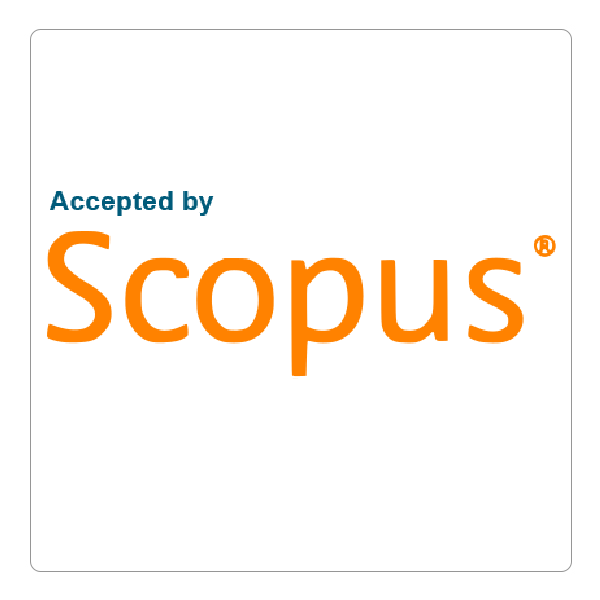How to Cite This Article
Edim, Moses M.; Okam, Njok N.; Gber, Nguuma I.; Egbelo, Jessica E.; Okon, Israel E.; Ogbonna, Chiemerie P.; Aidoo, Emmanuel K.; Chisom, Kenneth N.; and Samuel, Emmanuel
(2025)
"Insilico evaluation of the therapeutic effects of N1-(5-(3-imino-2,4a-dihydro-3H-benzo[f]chromen-2-yl)-1,3,4-thiadiazol-2-yl)-N10-(5-(3-imino-3H-benzo[f]chromen-2-yl)-1,3,4-thiadiazol-2-yl)decanediamide as Anti-Hepatitis B and C agent,"
Polytechnic Journal: Vol. 14:
Iss.
2, Article 11.
DOI: https://doi.org/10.59341/2707-7799.1843
Document Type
Original Article
Abstract
Hepatitis B and C viruses are a major cause of cirrhosis and hepatocellular carcinoma, with significantly increasing mortality and morbidity worldwide. This study provides a detailed analysis of the therapeutic effects of N1-(5-(3-imino-2,4a-dihydro-3H-benzo[f]chromen-2-yl)-1,3,4-thiadiazol-2-yl)-N10-(5-(3-imino-3H-benzo[f]chromen-2-yl)-1,3,4-thiadiazol-2-yl) decan diamide (PRO_16) as an anti-hepatitis B and C virus. A computational DFT was applied via the ωB97XD method of theory and a basis set of 6-311G++ (2d, 2p) to evaluate the quantum mechanics of the compound. A time-dependent self-consistent field DFT method with the aforementioned functional and basis set was utilized for UV‒visible evaluation. Additionally, a molecular docking technique and ADMET prediction were used to elucidate the biological potential and pharmacokinetic characteristics of the thiadiazol compound. The results of the analyses revealed very significant biological activity. On docking PRO_16 with the target HBV proteins (PDB ID: 8GBU and 8GHS) and HCV proteins (PDB ID: 2F9U and 2HD0), binding affinity values of -5.2 kcal/mol, -6.5 kcal/mol, -5.8 kcal/mol and -10.0 kcal/mol were observed upon docking the compound with the 8GBU, 8GHS, 2F9U, and 2HD0 proteins, respectively. The outcome of this investigation revealed the inhibitory potential and drug-likeness of the thiadiazol derivative, revealing its therapeutic potency as a promising drug candidate against hepatitis B and C viruses.
Receive Date
07/10/2024
Revise Date
03/11/2024
Accept Date
15/11/2024
References
[1] World Health Organization. Global hepatitis report 2024: action for access in low-and middle-income countries. World Health Organization; 2024. ISBN978-92-4-009167-2.
[2] World Health Organization. Monitoring and evaluation for viral hepatitis B and C: recommended indicators and framework. 2016. ISBN 978 92 4 151028 8.
[3] Dhingra S, Ward SC, Thung SN. Liver pathology of hepatitis C, beyond grading and staging of the disease. World J Gastroenterol 2016;22(4):1357. http://doi:10.3748/wjg.v22.i4. 1357.
[4] Bomgning LCK, Tsague MK, Fotio AL, Nguelefackmbuyo EP, Nguelefack TB. Chapter seven viral hepatitis infection: current facts and figures, and contribution of the african pharmacopeia. Transform Develop Postcolon Africa: Voice Pure Nat Scientist 2024;134. ISBN (10): 1-0364-0311-4.
[5] Stroffolini T, Stroffolini G. A historical overview on the role of hepatitis B and C viruses as etiological factors for hepatocellular carcinoma. Cancers 2023;15(8):2388. https://doi. org/10.3390/cancers15082388.
[6] Lin CL, Kao JH. Development of hepatocellular carcinoma in treated and untreated patients with chronic hepatitis B virus infection. Clin Mol Hepatol 2023;29(3):605. https://doi.org/10. 3350/cmh.2022.0342.
[7] Petta S, Maida M, Macaluso FS, Barbara M, Licata A, Craxì A, et al. Hepatitis C virus infection is associated with increased cardiovascular mortality: a meta-analysis of observational studies. Gastroenterology 2016;150(1):145e55. https://doi. org/10.1053/j.gastro.2015.09.007.
[8] Pei Y, Wang C, Yan SF, Liu G. Past, current, and future developments of therapeutic agents for treatment of chronic hepatitis B virus infection. J Med Chem 2017;60(15):6461e79. https://doi.org/10.1021/acs.jmedchem.6b01442.
[9] Kabiri M, Jazwinski AB, Roberts MS, Schaefer AJ, Chhatwal J. The changing burden of hepatitis C virus infection in the United States: model-based predictions. Ann Intern Med 2014;161(3):170e80. 10.DOI/abs/10.7326/m14- 0095.
[10] Kurda AH, Kakil SA, Hassan YM. High responsivity of solgel TiO2NPs/Si photodetectors deposited by spin coating method. Polytech J 2024;14(2):2. https://doi.org/10.59341/ 2707-7799.1832.
[11] Singh D, Prashar D, Singla J, Khan AA, Al-Sarem M, Kurdi NA. Intelligent medical diagnostic system for hepatitis B. Comput Mater Continua (CMC) 2022;73(3):6047e68. https://doi.org/10.32604/cmc.2022.031255.
[12] Akkina R, Barber DL, Bility MT, Bissig KD, Burwitz BJ, Eichelberg K, et al. Small animal models for human immunodeficiency virus (HIV), hepatitis B, and tuberculosis: proceedings of an NIAID workshop. Curr HIV Res 2020;18(1): 19e28. https://doi.org/10.5555/20203121979.
[13] Eno EA, Kechi EL, Nduoma FA, Edet HO. In silico engineering of fullerene-like Al12N12 nanostructured for the adsorption of PH3, NH3, and COCl2 industrial affili-ate gases. Polytech J 2024;14(1):13. https://doi.org/10.59341/2707- 7799.1828.
[14] Yusuf M. Insights into the in-silico research: current scenario, advantages, limits, and future perspectives. Life in Silico 2023;1(1):13e25 [life-insilico.com].
[15] Moharana M, Pattanayak SK, Khan F. Computational efforts to identify natural occurring compounds from phyllanthus niruri that target hepatitis B viral infections: DFT, docking and dynamics simulation study. J Indian Chem Soc 2022; 99(9):100662. https://doi.org/10.1016/j.jics.2022.100662.
[16] Fahim AM, Shalaby MA. Synthesis, biological evaluation, molecular docking and DFT calculations of novel benzenesulfonamide derivatives. J Mol Struct 2019;1176:408e21. https://doi.org/10.1016/j.molstruc.2018.08.087.
[17] Thabet HK. Sebacoyl isothiocyanate in the synthesis of bis (1, 3,4-thiadiazole, 1, 3,4-thiadiazolo [3,2-a] pyridine, 4-thiazolidinone, chromenos, and naphthol [1,2-b][1, 4] oxazine) derivatives. Orient J Chem 2020;36(2). https://doi.org/10.13005/ ojc/360215.
[18] Frisch A. Gaussian 09 W reference. Wallingford, USA, 25p, 470. Frisch, A. (2009). Gaussian 09 W Reference Wallingford, USA 2009;25p:470. ISBN: 978-0-9727187-7-6.
[19] Dennington R, Keith TA, Millam JM. GaussView 6.0. 16. In: HyperChem T, editor. Shawnee Mission, KS, USA: Semichem Inc.; 2001. HyperChem 8.07, HyperChem Professional Program. Gainesville, Hypercube. 2016.
[20] Chemcraft V. 1.8; Graphical software for visualization of quantum chemistry computations. https://www. chemcraftprog.com.
[21] Lu T. A comprehensive electron wavefunction analysis toolbox for chemists, Multiwfn. J Chem Phys 2024;161(8). https://doi.org/10.1063/5.0216272.
[22] Cole AG, Kultgen SG, Mani N, Quintero JG, Fan KY, Ardzinski A, et al. Design, synthesis, and structure-activity relationship of a bicyclic HBV capsid assembly modulator chemotype leading to the identification of clinical candidate AB-506. Bioorg Med Chem Lett 2023;94:129456. https://doi. org/10.1016/j.bmcl.2023.129456.
[23] Venkatraman S, Njoroge FG, Wu W, Girijavallabhan V, Prongay AJ, Butkiewicz N, et al. Novel inhibitors of hepatitis C NS3eNS4A serine protease derived from 2-aza-bicyclo [2. 2. 1] heptane-3-carboxylic acid. Bioorg Med Chem Lett 2006; 16(6):1628e32. https://doi.org/10.1016/j.bmcl.2005.12.046.
[24] Lorenz IC, Marcotrigiano J, Dentzer TG, Rice CM. Structure of the catalytic domain of the hepatitis C virus NS2-3 protease. Nature 2006;442(7104):831e5. https://doi.org/10.1038/ nature04975.
[25] Protein Data Bank: the single global archive for 3D macromolecular structure data. Nucleic Acids Res 2019;47(D1): D520e8. https://doi.org/10.1093/nar/gky949.
[26] Studio D. Dassault systemes BIOVIA, discovery studio modelling environment, release 4.5. San Diego, CA, USA: Accelrys Softw. Inc.; 2015. p. 98e104. https://www.3ds.com/ support/.
[27] Pantsar T, Poso A. Binding affinity via docking: fact and fiction. Molecules 2018;23(8):1899. https://doi.org/10.3390/ molecules23081899.
[28] Trott O, Olson AJ. AutoDock Vina: improving the speed and accuracy of docking with a new scoring function, efficient optimization, and multithreading. J Comput Chem 2010; 31(2):455e61. https://doi.org/10.1002/jcc.21334.
[29] DeLano WL. Pymol: an open-source molecular graphics tool. CCP4 Newsl. Protein Crystallogr 2002;40(1):82e92. GHBF, http://www.pymol.org.
[30] Gordy W. A relation between bond force constants, bond orders, bond lengths, and the electronegativities of the bonded atoms. J Chem Phys 1946;14(5):305e20. https://doi. org/10.1063/1.1724138.
[31] Shibaev PV, Schaumburg K, Bjornholm T, Norgaard K. Conformation of polythiophene derivatives in solution. Synth Met 1998;97(2):97e104. https://doi.org/10.1016/S0379- 6779(98)00093-9.
[32] Pluhackova K, Grimme S, Hobza P. On the importance of electron correlation effects for the intramolecular stacking geometry of a bis-thiophene derivative. J Phys Chem 2008; 112(48):12469e74. https://doi.org/10.1021/jp8051664. Coates, J. (2000). Interpretation of infrared spectra, a practical approach. Encyclopedia of analytical chemistry, 12, 10815- 10837.
[33] Duerst M. Spectroscopic methods of analysis: infrared spectroscopy. Swarbrick J., Boylon JC, Encyclopedia of Pharmaceutical Technology 2007;3:3405e18. ISBN: 9781351124874.
[34] Saji RS, Prasana JC, Muthu S, George J. Experimental and theoretical spectroscopic (FT-IR, FT-Raman, UV VIS) analysis, natural bonding orbitals and molecular docking studies on 2-bromo-6-methoxynaphthalene: a potential anticancer drug. Heliyon 2021;7(6):e07213. https://doi.org/10.1016/j. heliyon.2021.e07213.
[35] Ojeda JJ, Dittrich M. Fourier transform infrared spectroscopy for molecular analysis of microbial cells. Microbial Systems Biology: methods and Protocols. 2012. p. 187e211. ISBN: 978- 1-61779-826-9.
[36] Smith TEL, Wooster MJ, Tattaris M, Griffith DWT. Absolute accuracy and sensitivity analysis of OP-FTIR retrievals of CO 2, CH 4 and CO over concentrations representative of" clean air" and" polluted plumes". Atmos Meas Tech 2011;4(1): 97e116. https://doi.org/10.5194/amt-4-97-2011,2011.
[37] Landeros-Martinez LL, Glossman-Mitnik D, OrrantiaBorunda E, Flores-Holguin N. Theoretical calculation of UV Vis, IR spectra and reactivity properties of Tamoxifen drug: a methodology comparison. MOJ Biorg Inorg Chem 2017;1(3): 17. https://doi.org/10.15406/mojboc.2017.01.00017.
[38] Abraham CS, Muthu S, Prasana JC, Armakovic SJ, Armakovic S, AS BG. Spectroscopic profiling (FT-IR, FTRaman, NMR and UV Vis), autoxidation mechanism (HBDE) and molecular docking investigation of 3-(4-chlorophenyl)-N,N-dimethyl-3-pyridin-2-ylpropan-1-amine by DFT/TD-DFT and molecular dynamics: a potential SSRI drug. Comput Biol Chem 2018;77:131e45. https://doi.org/10. 1016/j.compbiolchem.2018.08.010.
[39] Mabkhot YN, Aldawsari FD, Al-Showiman SS, Barakat A, Soliman SM, Choudhary MI, et al. Novel enaminone derived from thieno [2, 3-b] thiene: synthesis, x-ray crystal structure, HOMO, LUMO, NBO analyses and biological activity. Chem Cent J 2015;9:1e11. https://doi.org/10.1186/s13065-015-0100-9.
[40] Heiblum M, Fischetti MV, Dumke WP, Frank DJ, Anderson IM, Knoedler CM, et al. Electron interference effects in quantum wells: observation of bound and resonant states. Phys Rev Lett 1987;58(8):816. https://doi.org/10.1103/ PhysRevLett.58.816.
[41] Louis E, San-Fabian E, D íaz-García MA, Chiappe G, Verges JA. Are electron affinity and ionization potential intrinsic parameters to predict the electron or hole acceptor character of amorphous molecular materials? J Phys Chem Lett 2017;8(11):2445e9. https://doi.org/10.1021/acs.jpclett. 7b00681.
[42] Babu NS, Kumar PP. Computational studies and multivariate analysis of global and local reactivity descriptors of five membered heterocycles molecules by density functional theory (DFT). Paper ID: B15106. 2015.
[43] Gadre SR, Suresh CH, Mohan N. Electrostatic potential topology for probing molecular structure, bonding and reactivity. Molecules 2021;26(11):3289. https://doi.org/10.3390/ molecules26113289.
[44] Suresh CH, Remya GS, Anjalikrishna PK. Molecular electrostatic potential analysis: a powerful tool to interpret and predict chemical reactivity. Wiley Interdiscip Rev Comput Mol Sci 2022;12(5):e1601. https://doi.org/10.1002/wcms.1601.
[45] Govindasamy P, Gunasekaran S. Quantum mechanical calculations and spectroscopic (FT-IR, FT-Raman and UV) investigations, molecular orbital, NLO, NBO, NLMO and MESP analysis of 4-[5-(4-methylphenyl)-3-(trifluoromethyl)- 1H-pyrazol-1-yl] benzene-1-sulfonamide. J Mol Struct 2015; 1081:96e109. https://doi.org/10.1016/j.molstruc.2014.10.011.
[46] Ghose AK, Herbertz T, Pippin DA, Salvino JM, Mallamo JP. Knowledge based prediction of ligand binding modes and rational inhibitor design for kinase drug discovery. J Med Chem 2008;51(17):5149e71. https://doi.org/10.1021/ jm800475y.
[47] Li S, Xi L, Wang C, Li J, Lei B, Liu H, et al. A novel method for protein-ligand binding affinity prediction and the related descriptors exploration. J Comput Chem 2009;30(6):900e9. https://doi.org/10.1002/jcc.21078.
[48] Mohanty M, Mohanty PS. Molecular docking in organic, inorganic, and hybrid systems: a tutorial review. Monatsh Chem 2023;6:1e25. https://doi.org/10.1007/s00706-023-03076-1.
[49] Pantsar T, Poso A. Binding affinity via docking: fact and fiction. Molecules 2018;23(8):1899. https://doi.org/10.3390/ molecules23081899.
[50] Wade RC, Goodford PJ. The role of hydrogen-bonds in drug binding. Prog Clin Biol Res 1989;289:433e44. PMID: 2726808.
[51] Meyer M, Wilson P, Schomburg D. Hydrogen bonding and molecular surface shape complementarity as a basis for protein docking. J Mol Biol 1996;264(1):199e210. https://doi. org/10.1006/jmbi.1996.0634.
[52] Guan L, Yang H, Cai Y, Sun L, Di P, Li W, et al. ADMETscore - a comprehensive scoring function for evaluation of chemical drug-likeness. Med Chem Comm 2018;10(1): 148e57. https://doi.org/10.1039/C8MD00472B.
[53] Fu L, Shi S, Yi J, Wang N, He Y, Wu Z, et al. ADMETlab 3.0: an updated comprehensive online ADMET prediction platform enhanced with broader coverage, improved performance, API functionality and decision support. Nucleic Acids Res 2024:1e10. https://doi.org/10.1093/nar/gkae236.
[54] Oprea TI. Property distribution of drug-related chemical databases. J Comput Aided Mol Des 2000;14(3):251e64. https://doi.org/10.1023/A:1008130001697.
[55] Smith DA, Beaumont K, Maurer TS, Di L. Relevance of half-life in drug design: miniperspective. J Med Chem 2017;61(10):4273e82. https://doi.org/10.1021/acs.jmedchem. 7b00969.
[56] Schrey AK, Nickel-Seeber J, Drwal MN, Zwicker P, Schultze N, Haertel B, et al. Computational prediction of immune cell cytotoxicity. Food Chem Toxicol 2017;107: 150e66. https://doi.org/10.1016/j.fct.2017.05.041.
[57] Ames BN, Durston WE, Yamasaki E, Lee FD. Carcinogens are mutagens: a simple test system combining liver homogenates for activation and bacteria for detection. Proc Natl Acad Sci USA 1973;70:2281e5. https://doi.org/10.1073/pnas. 70.8.2281.
[58] Helsby NA, Yong M, van Kan M, de Zoysa JR, Burns KE. The importance of both CYP2C19 and CYP2B6 germline variations in cyclophosphamide pharmacokinetics and clinical outcomes. Br J Clin Pharmacol 2019;85(9):1925e34. https:// doi.org/10.1111/bcp.14031.
[59] Egan WJ. Computational models for ADME. Annu Rep Med Chem 2007;42:449e67. https://doi.org/10.1016/S0065-7743(07) 42029-2.
[60] Clark DE. Computational prediction of ADMET properties: recent developments and future challenges. Annu Rep Comput Chem 2005;1:133e51. https://doi.org/10.1016/S1574- 1400(05)01010-8.
[61] Krejsa CM, Horvath D, Rogalski SL, Penzotti JE, Mao B, Barbosa F, et al. Predicting ADME properties and side effects: the BioPrint approach. Curr Opin Drug Discov Dev 2003;6(4):470e80. ISSN 1367-6733.
[62] Wishart DS. Improving early drug discovery through ADME modeling: an overview. Drugs R 2007;8:349e62. https://doi. org/10.2165/00126839-200708060-00003.
[63] Ghose AK, Viswanadhan VN, Wendoloski JJ. A knowledgebased approach in designing combinatorial or medicinal chemistry libraries for drug discovery. 1. A qualitative and quantitative characterization of known drug databases. J Combin Chem 1999;1(1):55e68. https://doi.org/10.1021/ cc9800071.
[64] Muegge I, Brittelli D, Heald SL. Simple selection criteria for drug like chemical matter. J Med Chem 2001;44:1841e6. https://doi.org/10.1021/jm015507e.
[65] Chen X, Li H, Tian L, Li Q, Luo J, Zhang Y. Analysis of the physicochemical properties of acaricides based on Lipinski's rule of five. J Comput Biol 2020;27(9):1397e406. https://doi. org/10.1089/cmb.2019.0323.
[66] Plinski EF, Plinska S. Veber's rules in terahertz light. 2020. https://doi.org/10.21203/rs.2.22281/v1.











Follow us: